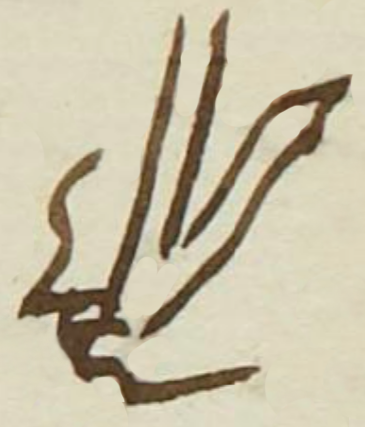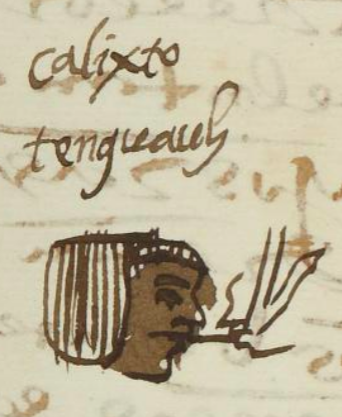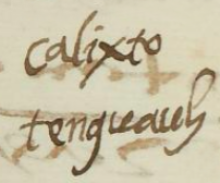Tencuauh (MH510r)
This black-line drawing of the compound glyph for the personal name Tencuauh (here, attested as a man's name) has two prominent elements. One is a human face in profile looking toward the viewer's left. Attached to the lip (tentli) of this face is a tree (cuahuitl) trunk with two parts. It is worth noting when trying to translate this name, ten- can mean edge, and cuahuitl can mean woods.
Stephanie Wood
There is a place name, Tecuauhtitlan, that has been translated as the "bosque del pedregal" (woods of the lava field). [See: Geografía mexicana.] This could mean that the "Ten-" of Tencuauh is meant as a rebus for Te- (stone). But this is a personal name and not a landscape description.
Stephanie Wood
calixto
tenguauh
Calixto Tencuauh
Stephanie Wood
1560
Jeff Haskett-Wood
labios, árboles, trees, lips, nombres de hombres

ten(tli), lip-mouth, https://nahuatl.wired-humanities.org/content/tentli
cuahui(tl), wood-tree, https://nahuatl.wired-humanities.org/content/cuahuitl-1
Matrícula de Huexotzinco, folio 510r, World Digital Library, https://www.loc.gov/resource/gdcwdl.wdl_15282/?sp=99&st=image
This manuscript is hosted by the Library of Congress and the World Digital Library; used here with the Creative Commons, “Attribution-NonCommercial-ShareAlike 3.0 License” (CC-BY-NC-SAq 3.0).




